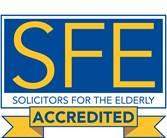It is clear that obligations under s.7 TMA 1970 are not fulfilled by a trust registering with the TRS. The timetable is very different.
Under s.7 TMA 1970, trustees who have not been required to complete a return, and who first have a tax liability in respect of income or gains in a particular tax year are required to notify ‘an officer of the Board’ by the 5 October next following that year.
The date by which a trust must provide information as a consequence of having a tax liability is very different under the TRS regulations.
If the trust was set up before 6 April 2021, the trustees have until 31 January next following the first tax year that are liable to pay any of the seven taxes to register as a taxable trust with the TRS.
But for trusts set up on or after 6 April 2021, and the second and subsequent tax years for trusts set up before 6 April 2021, the timetable can be much tighter.
If a trust set up on or after 6 April 2021 was liable for any of the seven taxes named in regulation 45(14) in 2021/22 or in 2022/23 before 4 June 2022, it had to register as a taxable trust with the TRS and provide the prescribed information by 1 September 2022.
Otherwise, a trust has to register as a taxable trust with the TRS and provide the prescribed information within 90 days of the trustees becoming liable to pay any of the taxes.
This last rule is easy to recognise if the tax is SDLT, less so if it is income tax or capital gains tax, where trustees cannot know if there is a liability until after the end of a tax year.
For example, if a trust set up in May 2021 incurs a capital gains tax liability on disposal of residential property on 7 July 2022 (its first taxable event), it must pay that tax by 5 September; but the TRS reporting date is 5 October, even if a subsequent disposal in tax year 2022/23 results in there being no tax liability for that tax year.
So it is clear that trustees must still have regard to S.7 TMA 1970.
Ray Magill
